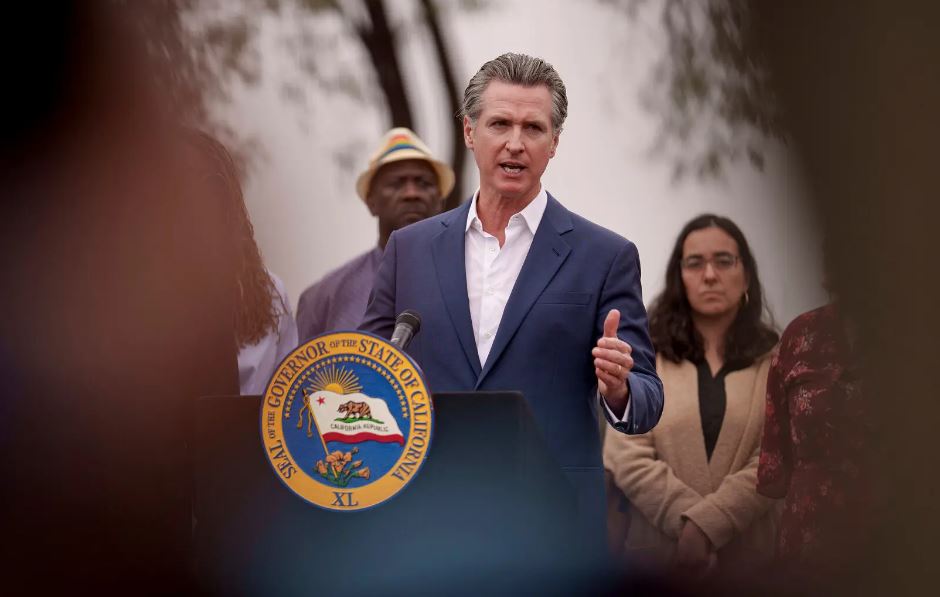For much of the past year, conservatives have viewed California Governor Gavin Newsom as a symbol of liberal excess—a polished coastal governor with national ambitions whose state has seemingly prioritized undocumented immigrants while allowing homeless encampments to spread on its streets.
Last November, Newsom debated Florida Governor Ron DeSantis on Fox News, a high-profile political showdown. His political action committee also ran ads in Republican-led states criticizing their policies, especially on abortion rights. This has painted Newsom as a left-leaning politician with aspirations beyond California.
However, Newsom, a business owner by background, often governs more from the middle than his critics give him credit for. Over the past month, as he reviewed hundreds of bills sent by California’s Democratic-dominated Legislature, his decisions reflect a more centrist stance than expected. He has until this Monday to sign or veto these bills.
With Vice President Kamala Harris, a former California senator, in a tight race for the White House, Republicans have turned their attention to Harris and her home state. This puts pressure on Newsom to ensure that California’s lawmakers don’t give Republicans more fodder for political attacks. The stakes are high nationally, and Newsom’s recent actions suggest a strategy aimed at avoiding vulnerabilities that could impact both his and Harris’ political futures.
Newsom approved a range of progressive measures that align with California’s liberal reputation. These include significant bills to tackle the housing crisis, protect child influencers’ earnings, and ban plastic bags at retail stores. He also signed off on legislation allowing “cannabis cafes” to open in the state and a measure requiring health insurers to cover infertility treatments, including in vitro fertilization—policies that reflect broader national debates on social issues.
However, Newsom has also made decisions that moderate his liberal image. For example, he vetoed a first-in-the-nation proposal to regulate artificial intelligence, responding to concerns from the tech industry. He rejected environmentalists’ calls for warning labels on gas stoves and blocked free condom distribution in high schools. Additionally, a much-anticipated exploration of cash reparations for Black Americans was reduced to an apology for California’s role in slavery, as the state faces another budget deficit.
This moderation is partly a reflection of California’s political diversity. While Democrats dominate statewide, conservative pockets exist in the Central Valley, inland suburbs, and northern regions. California governors have historically acted as a check on left-leaning legislators when it comes to spending and progressive bills. But Newsom’s strategy of moving toward the center also serves the broader Democratic Party in an election year, when Republicans are eager to attack California’s liberal policies as a reflection of national Democratic leadership.
Republicans have specifically targeted Vice President Harris through their criticisms of California. Former President Donald Trump, at a recent appearance in Los Angeles, warned that Harris and the Democratic left would “do to America what they did to California.” Despite a picturesque California day, Trump painted the state as a “mess” under Democratic leadership.
In this political climate, Newsom’s ability to deflect attacks on California’s governance becomes crucial not only for Harris but also for his own political future. If Harris loses the upcoming election, Newsom could emerge as a potential Democratic contender for the presidency. By addressing issues that Republicans frequently highlight—such as homelessness, crime, and immigration—Newsom is attempting to eliminate potential weak points in the eyes of moderate voters.
Newsom has faced personal attacks from Trump, who blames him for California’s problems. While Newsom has largely ignored the insults, they resonate with Trump’s base and moderates who view California as overly liberal. Newsom has admitted that issues like retail theft and homelessness have reached a tipping point.
In recent weeks, the governor signed Republican-backed bills to toughen penalties for retail theft and human trafficking involving children. He also approved new punishments for those who participate in dangerous street-racing “takeovers.” Meanwhile, as Republicans have criticized California’s immigration policies, Newsom vetoed bills that would have extended unemployment benefits, mortgage assistance, and campus jobs to undocumented workers.
In the face of conservative warnings about government overreach, Newsom vetoed California’s proposal to ban gas stoves and blocked a plan to install speed limit sensors in cars. He also responded to Republican critiques that California had failed to manage campus protests over the Gaza war by signing legislation that requires public universities to update codes of conduct and train students on civil demonstrations.
In addition to his political maneuvers, Newsom’s personal evolution is evident in his policy decisions. Once a young, single politician, he is now a 56-year-old father of four, and many of the bills he signed this year reflect concerns about children and technology. These include laws limiting cell phone use in schools and banning “addictive” social media feeds for minors.
As Newsom’s term as governor winds down, he remains focused on his legacy. Although once considered a potential presidential candidate, he has been sidelined in the current race. Yet, with two years left in office, Newsom has said he intends to continue pushing bold policies. He has poured billions into addressing homelessness and has called on local governments to do more to clear encampments and build housing.

